An external sign of wear on the valve stem seals is the short-term appearance of blue smoke from the exhaust pipe after starting the engine and when braking the engine after a long drive under load
In this case, constant smoking is usually not observed.
Indirect signs - increased oil consumption in the absence of external leaks and oily spark plug electrodes.
Disconnect the negative battery cable.
Remove the spark plugs.
Set the piston of the 1st cylinder to the TDC position of the compression stroke (see "Setting the piston of the first cylinder to the TDC position of the compression stroke").
Remove the timing belt (see "Replacing the Timing Belt and Tensioner Pulley")
Remove the camshaft pulleys (see "Replacing the cylinder head gasket").
Remove the rear timing belt guard.
Remove the cylinder head cover (see "Replacing the cylinder head cover gasket").
Remove the block head.
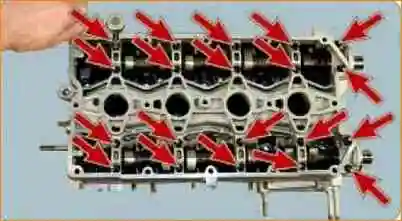
Unscrew the twenty bolts of the camshaft bearing housing with an 8" socket

Remove the case.

Remove the camshafts from the cylinder head supports
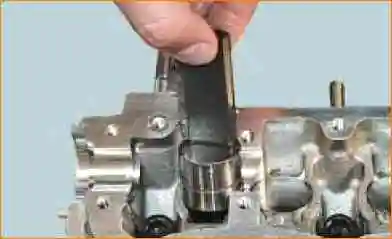
Remove the valve lifters from the cylinder head holes
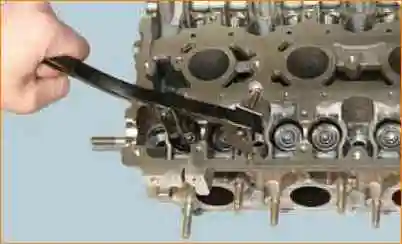
Install the valve spring compressor by screwing the camshaft bearing cap bolt into one of the holes in the head of the block and hooking the tool onto this bolt.
Compress the valve spring with the tool.
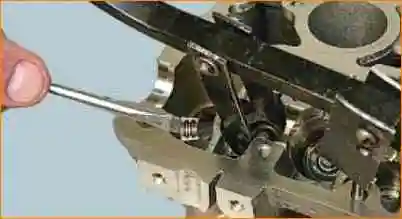
Remove the two crackers from the upper spring plate using tweezers or a magnetized screwdriver.
Then remove the fixture.
If the force of moving the lever of the device increases significantly, and the crackers do not come out of the valve groove, apply a light blow with a hammer on the spring plate to release the crackers.
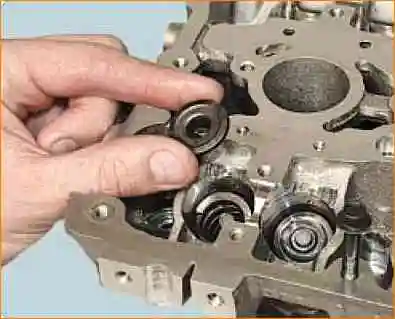
Remove the spring plate.
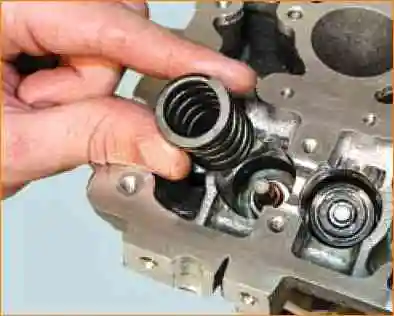
Remove the spring.

Press the valve stem seal off the valve guide.
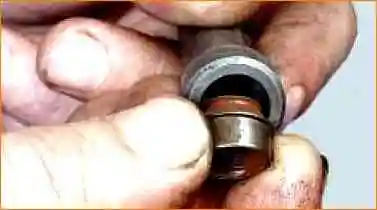
If there is no cap remover, carefully remove them with pliers.
Force must be applied strictly upwards and do not turn the caps so as not to damage the valve guides.
If new caps are included ov includes an installation sleeve, put it on the valve stem to protect the working edge of the cap from damage with sharp edges of the grooves for crackers on the valve stem.
Dip the valve stem seal in engine oil and insert it into the mandrel.
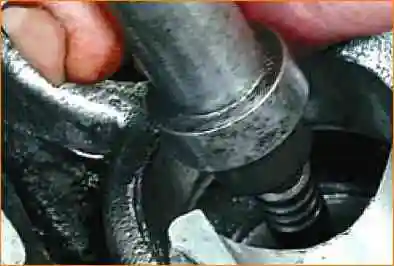
Carefully press the cap in until it stops.
If a guide sleeve was installed on the valve stem, remove it
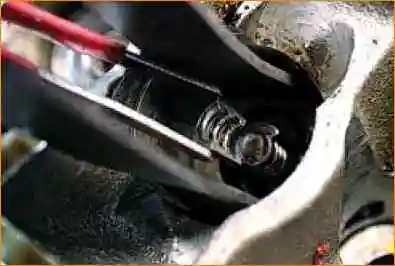
Install the springs and spring plates.
Squeezing the spring with a tool, install the crackers so that they fit into the grooves of the valve stem.

After installing the cotters and removing the valve spring compressor, apply a few light blows with a hammer on the end of the valve stem so that the cotters are guaranteed to be fixed in the groove of the stem.
If the skewed crackers remain unfixed, when the engine is started, the “dry” valve will fall into the cylinder, which will lead to a serious engine failure.
Install the valve lifter.
Replace the valve stem seals in the same way.

Mount the block head to the engine.
Lubricate the camshaft bearings in the block head and hydraulic tappets with engine oil.

The intake camshaft has a distinctive belt.
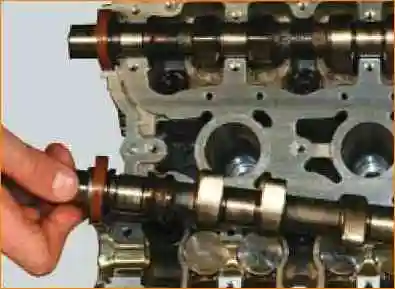
Install the camshafts in the cylinder head bearings so that the cams of the 1st cylinder are directed away from the valve lifters.
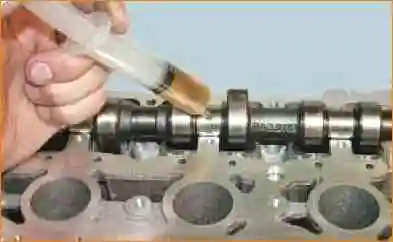
Lubricate the camshaft journals with engine oil
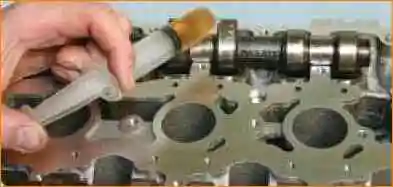
Lubricate the camshaft lobes with engine oil
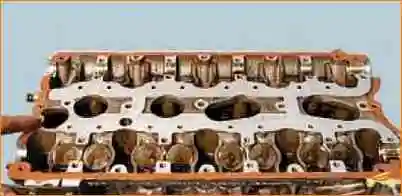
Apply sealant to the surface of the cylinder head mating with the camshaft bearing housing.
It is allowed to start the engine no earlier than 1 hour after applying the sealant.
Install the bearing housing and tighten its mounting bolts evenly in a criss-cross pattern starting at the middle supports.
The bearing housing is centered by bushings pressed into the cylinder head.
Before installing the housing, check that they are present and that they are pressed in correctly.
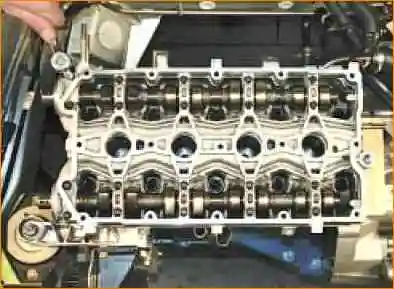
Install the removed timing parts and adjust the timing belt tension.
Install the removed alternator drive parts and adjust the tension of the alternator drive belt.





